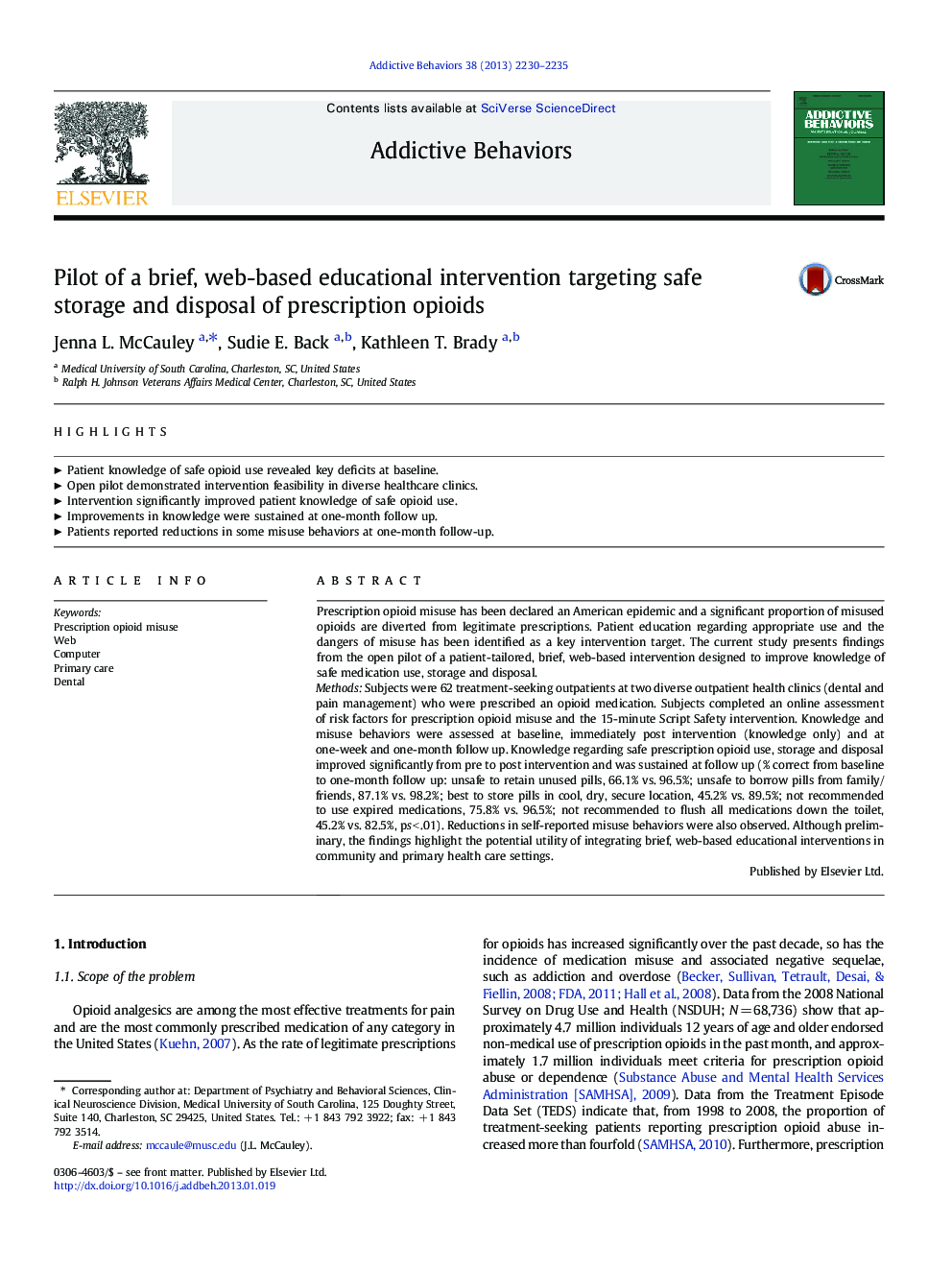| Article ID | Journal | Published Year | Pages | File Type |
|---|---|---|---|---|
| 899327 | Addictive Behaviors | 2013 | 6 Pages |
Prescription opioid misuse has been declared an American epidemic and a significant proportion of misused opioids are diverted from legitimate prescriptions. Patient education regarding appropriate use and the dangers of misuse has been identified as a key intervention target. The current study presents findings from the open pilot of a patient-tailored, brief, web-based intervention designed to improve knowledge of safe medication use, storage and disposal.MethodsSubjects were 62 treatment-seeking outpatients at two diverse outpatient health clinics (dental and pain management) who were prescribed an opioid medication. Subjects completed an online assessment of risk factors for prescription opioid misuse and the 15-minute Script Safety intervention. Knowledge and misuse behaviors were assessed at baseline, immediately post intervention (knowledge only) and at one-week and one-month follow up. Knowledge regarding safe prescription opioid use, storage and disposal improved significantly from pre to post intervention and was sustained at follow up (% correct from baseline to one-month follow up: unsafe to retain unused pills, 66.1% vs. 96.5%; unsafe to borrow pills from family/friends, 87.1% vs. 98.2%; best to store pills in cool, dry, secure location, 45.2% vs. 89.5%; not recommended to use expired medications, 75.8% vs. 96.5%; not recommended to flush all medications down the toilet, 45.2% vs. 82.5%, ps < .01). Reductions in self-reported misuse behaviors were also observed. Although preliminary, the findings highlight the potential utility of integrating brief, web-based educational interventions in community and primary health care settings.
► Patient knowledge of safe opioid use revealed key deficits at baseline. ► Open pilot demonstrated intervention feasibility in diverse healthcare clinics. ► Intervention significantly improved patient knowledge of safe opioid use. ► Improvements in knowledge were sustained at one-month follow up. ► Patients reported reductions in some misuse behaviors at one-month follow-up.
